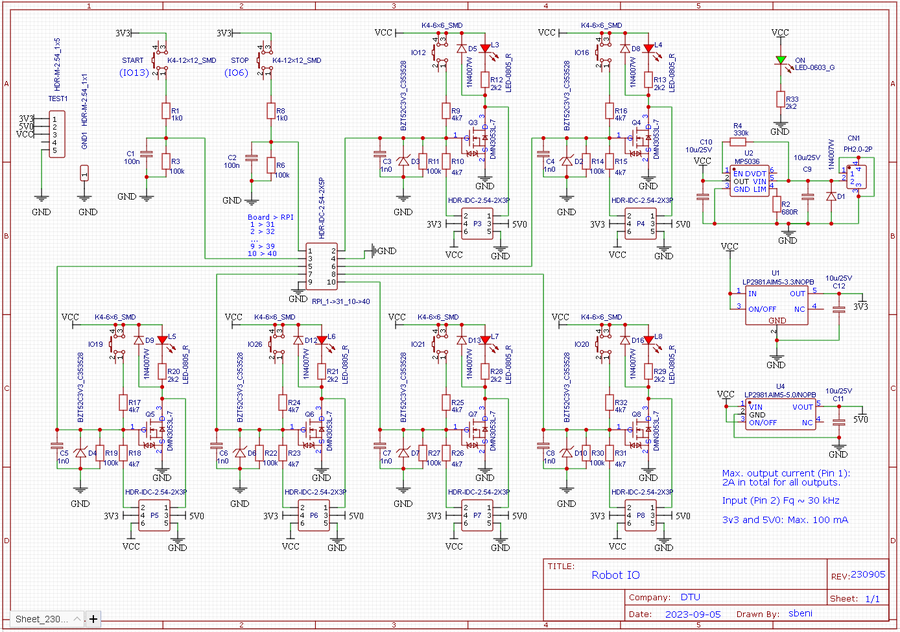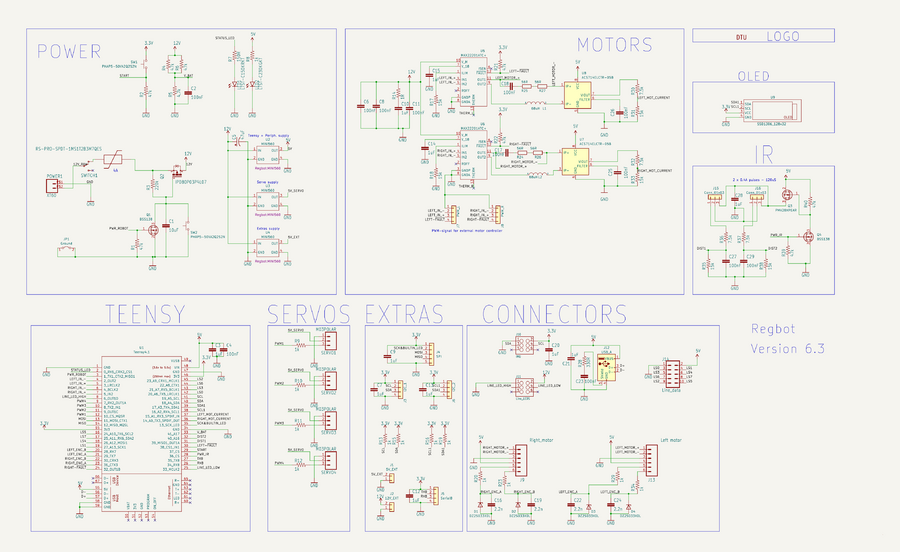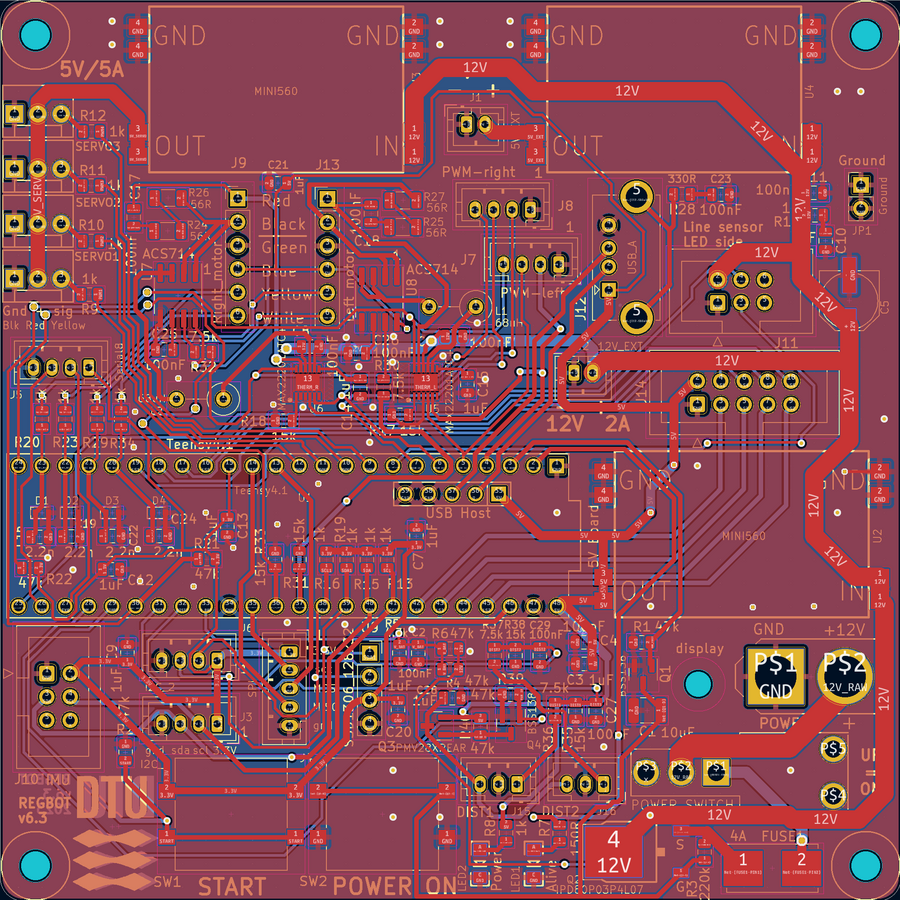Robobot circuits
From Rsewiki
(Difference between revisions)
| Line 2: | Line 2: | ||
== Digital IO == | == Digital IO == | ||
| + | |||
| + | === Circuit diagram === | ||
[[File:digital_IO-circuit.png | 900px]] | [[File:digital_IO-circuit.png | 900px]] | ||
| Line 9: | Line 11: | ||
If output, then a transistor is active when output is high, and can draw at least 1A from the 12V supply. | If output, then a transistor is active when output is high, and can draw at least 1A from the 12V supply. | ||
The 5V and 3.3V can supply no more than 100mA. | The 5V and 3.3V can supply no more than 100mA. | ||
| + | |||
| + | === PCB === | ||
[[File:digital_IO-PCB.png | 900px]] | [[File:digital_IO-PCB.png | 900px]] | ||
| Line 16: | Line 20: | ||
== Regbot == | == Regbot == | ||
| + | |||
| + | === Circuit diagram === | ||
[[File:regbot_6.3.png | 900px]] | [[File:regbot_6.3.png | 900px]] | ||
Figure 3. The Regbot circuit. | Figure 3. The Regbot circuit. | ||
| + | |||
| + | === PCB - 3D view === | ||
[[File:regbot_6.3_PCB.png | 900px]] | [[File:regbot_6.3_PCB.png | 900px]] | ||
| + | |||
| + | === PCB === | ||
Figure 4. Ecpected view of PCB. | Figure 4. Ecpected view of PCB. | ||
Revision as of 09:39, 27 December 2023
Back to Robobot_B
Contents |
Digital IO
Circuit diagram
Figure 1. The circuit diagram should ensure that each IO pin can function as both input and output. If input, then the pin has active pull down, i.e. for input to change, it must be pulled high, to at least 3.3V, but 5 or 12V will work too. If output, then a transistor is active when output is high, and can draw at least 1A from the 12V supply. The 5V and 3.3V can supply no more than 100mA.
PCB
Figure 2. The PCB layout for the digital IO circuit.
Regbot
Circuit diagram
Figure 3. The Regbot circuit.
PCB - 3D view
PCB
Figure 4. Ecpected view of PCB.
Figure 5. PCB with more trace details.




